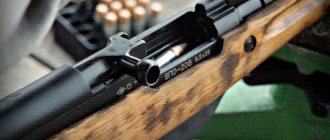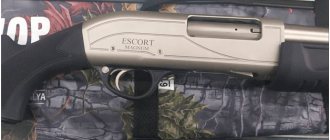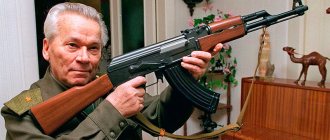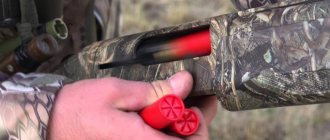In a number of parameters, 12-gauge cartridges outperform other calibers, which is why they are very popular among owners of smooth-bore firearms. Their charges have sufficient weight and many accessories. Most firearms enthusiasts are familiar with heavy-duty 12-gauge Magnum ammunition. For what purpose they are produced and what specific advantage they have over other cartridges can be found in this article.
"Magnum" in English means something big and strong. This designation is given to charges and guns designed to fire reinforced charges. Not every gun is designed to fire the Magnum cartridge. Such a weapon should have a reinforced locking mechanism and a reinforced barrel.
Main differences
The main difference between the 12-gauge Magnum cartridge is the length of the cartridge case, which is 76; 89 mm. Such cartridges were intended for shooting at waterfowl. They make it possible to shoot over long distances.
Strengthened cartridges helped equalize the charge speed readings when replacing lead shot with steel shot. Many developed countries have long switched to such charges when hunting waterfowl, since scientists believe that shot that falls to the bottom sooner or later ends up in the stomachs of birds. By collecting food from the bottom of a reservoir and swallowing metal, they become poisoned, which can lead to their death.
Kimball
The Kimball pistol, first introduced in 1955, was modeled after the highly successful High Standard small-bore pistol. The cartridge, however, was not at all “small” - “Kimbal” used 7.62x33 ammunition from the M1 carbine, which in the basic version accelerated a seven-gram bullet to 1300 J. The pistol version stated a bullet speed of 465 m/s and a muzzle energy of 770 J The creators also promised options for .357 Magnum revolver cartridges.
However, the pistol did not turn out very well. The original .30 M1 Carbine cartridge was designed for a relatively long barrel, and in a short pistol barrel the gunpowder did not have time to burn completely, giving a powerful muzzle flash. In addition, the blowback design, albeit with retarding grooves in the chamber, was clearly disproportionate to the power of the ammunition, and the pistols literally fell apart from recoil after 200-300 shots.
Kimball chambered for .30 M1 Carbine
The total production of these pistols was no more than 300 pieces.
Caliber equalization
The characteristics of the 12 gauge Magnum cartridge are no different from the 10 gauge charge. This fact is another reason for the popularity of reinforced cartridges. So, for example, a 20-gauge Magnum cartridge will have the same characteristics as a 12-gauge cartridge with a regular charge. Such indicators are made possible due to the length of the reinforced cartridge. If you need a small load, for example, when hunting small game or when shooting at close range, you can use a 20-gauge shotgun with a regular cartridge, and, for example, when hunting large game, use an enhanced Magnum load.
So, when shooting with steel shot, in order to equalize the performance with a lead charge, the size of the shot must be increased by two numbers, which, in turn, will reduce the number of pellets in the charge. The length of the 12-gauge Magnum cartridge makes it possible to equalize these indicators and give the hunter the opportunity to switch to steel shot while maintaining the characteristics of the charge.
NAACO Brigadier
One of the main lessons of history is that these same lessons, as a rule, teach no one anything. This is what happened immediately after World War II with the Canadian company NAACO.
She offered the Canadian army the Brigadier pistol, which in appearance and design replicated the famous Browning High-Power of the 1935 model. The main difference between the Brigadier and the Browning pistol was its size, weight and ammunition. The .45 NAACO cartridge was loaded with a 14.9 gram bullet, which had a muzzle velocity of 488 meters per second, with a muzzle energy of 1780 J - three times more than that of a nine-millimeter "high power" Browning. The weight of the pistol without cartridges was 1.9 kilos.
NAACO Brigadier
The Canadian Army refused to seriously test this monstrous model, and only a few images of it from old weapons manuals have reached us.
Where are they used?
When choosing a cartridge charge, information about the area in which you will be hunting will help and, of course, you need to pay attention to the time of year. Magnum cartridges provide visible results when shooting large shot at long distances. Because heavy charges can store energy over a long distance. Small shot at a distance of 30-40 meters will be ineffective; its speed will only be enough to wound the animal.
When hunting a goose from extreme distances, a 12-gauge Magnum loaded with large shot or buckshot will make it possible to fire a shot from a distance of 45-60 meters, which is 1.5 times more than a conventional charge with the same shot number. For hunting wild boar or wolves, buckshot with a Magnum attachment is used. This allows you to increase the number of buckshot in the cartridge and lengthen the killing distance. When hunting a hare in the fields, where the hare is often at a distance of 50 meters, the Magnum mount will also be effective, since at such a distance a conventional projectile will lose energy to kill. When hunting for capercaillie, which takes place in the early hours in gloomy light, the distance for a shot does not always correspond to the desired one, and the bird itself is tough to wound, so using reinforced Magnum cartridges on such a hunt is quite advisable.
I'm against magnum
What should a weapon and cartridges be like for goose hunting?! The weapon should be long-barreled, long-range, multi-charged, and the cartridges should certainly be magnum, most hunters today will say: “probably something like this.” Let’s try to figure out why this is so. Magnum weapons came to us with On the North American continent, camouflage refills with the inscriptions Goose (goose) and Turkey (turkey) caught the eyes of a huge army of European, and later our, hunters firmly and for a long time, most likely forever. If you remember, some 20-30 years ago they hunted goose with ordinary Izhey and TOZov, and with a weight of 32 grams, and the owners of 16 calibers, content with 29-30 grams, confidently laid the goose at the faithful 35 meters and if you notice, they continue to do this with success to this day. You will say that they also went after a bear with a spear they caught fish using horsehair. This doesn’t mean that we need to do the same in the 21st century! so that’s how it is, only there are some nuances here. The essence of the question is that A GOOSE IS FLYING AND IT HAS TO BE KILLED, and “he” gets knocked down with the first, or at least the second, shot. Then the distance becomes prohibitive (beyond 100 meters) and the remaining 3 multiple shots are sent into milk. And we all know and understand that a bird is reliably knocked down when 5 pellets of the corresponding number hit it and the shot must have sufficient speed, and the larger the shot, the longer the distance it retains its kinetic energy, but the larger the shot , the less it is in the charge, and from here the “magnum” cartridge naturally suggests itself, and this same “magnum” very much discourages our hunter, because the thought is constantly spinning in his head that he can shoot at 70 meters)))))) and they shoot after all(((((((. And the spread of these additional 18 grams with each next meter increases very significantly, in other words, if you carry out all the calculations and shootings, then it will be obvious that the magnum gives a maximum increase in the lethal distance (by a stretch) ten meters and one more thing, that a compact and uniform gun with a selected cartridge will “drop” a goose at absolutely the same distance as a magnum. The question is, do I need to break the gun, shoulder and cheek, or maybe visit the stand more often?! The answer, everyone decides for himself, logically, it’s even funny himself))) The States have their own hunting culture, which is not clear to our brother, if the Yankees usually shoot a turkey at 50 meters with a magnum, then even at 55 meters he will never make a shot, i.e. the laser rangefinder will show an inaccessible distance of 55m. And a simple 70 chamber “tells” us: you can see the legs - 50, and the eye - 35 - don’t shoot further. Train your eye, endurance and shoot for sure, my friends, because the goose is just a bird that it is necessary to outwit, and not defeat with a long-range howitzer. No fluff or feather! Spring is coming!
Ammo for large game
12 gauge Magnum bullet cartridges are produced today by all well-known brands. The effectiveness of this charge has been tested by time. If the gun allows you to shoot reinforced cartridges, then using them when hunting a bear or large elk will not be a bad idea. A 16-gauge shotgun can become equal to force 12 due to the increased charge, and when hunting large game, such an increase will be effective. The basic rule is that the gun must be designed to fire reinforced charges. This condition affects not only the wear and tear of the gun, but also the safety of the hunter.
Desert Eagle
The Desert Eagle from the American company Magnum research is undoubtedly the most successful and popular high-power pistol not only in the USA, but throughout the world.
Desert Eagle prototype pistol, simply called Eagle 357 Magnum
The idea of creating it for hunting and target shooting under the .357 Magnum revolver cartridge arose in the States in 1979. After its developers encountered technical and technological problems, they hired the Israelis from IMI to help them, and by 1985 the Dessert Eagle went on wide sale. Since then, handgun production has moved from Israel to the United States, and a whole host of models have appeared, using different types of cartridges, including .44 Magnum and .50AE, a variety of barrel lengths and, of course, all sorts of finishes, including chrome, gold plated and other niceties .
Desert Eagle has become a real mass cult hero!
It has appeared in hundreds of films and computer games, and other reference books even stated that the Desert Eagle is in service with one or another special police unit. However, this has never been confirmed by facts.
An interesting feature of the Desert Eagle is that it uses automatic gas release and barrel locking by turning the bolt, which is very rare for a “short-barreled” gun. In the .50AE version, the pistol produces 1900-2200 J (bullet weighing 19-21 grams, speed 470-450 m/s).
What are the conclusions?
12 gauge Magnum cartridges can be equivalent to 10 gauge in terms of charge strength. The use of such cartridges is justified for certain types of hunting. Reinforced cartridges can only be fired from guns designed for such pressures. This can be determined by the passport attached to the gun, and by the characteristics of the cartridge, which are indicated on the packaging - this is the length of the cartridge case and the pressure when the cartridge is fired.
These charges are mainly used in countries where shooting game in water bodies with lead charges is prohibited. Magnum is also used in small calibers to increase the charge if necessary.
12-gauge Magnum cartridges receive positive reviews from hunters; they highlight the fact that using this charge for all types of hunting is impractical: it has a high cost and strong recoil. But for certain types of hunting, such a charge brings the desired result and is an effective method of increasing sharpness and combat range when used correctly.
Gabbet-Fairfax "Mars"
One of the earliest attempts to create a powerful pistol in honor of the god of war Mars dates back to 1898.
A certain British gentleman, Hugh Gabbett-Fairfax, invented a self-loading pistol using automatic equipment, with a movable barrel that had a long recoil and was locked by turning the bolt. The pistol had an original system for feeding cartridges from the magazine: when the barrel rolled back, the cartridge was “pulled out” of the magazine back onto a special feeder tray. In the extreme rear position, the barrel disengaged from the bolt and returned to the front position, and the bolt remained behind until the shooter released the trigger. After the user returned the trigger to its original position, the bolt moved forward, picked up the cartridge from the feeder tray and sent it into the barrel.
Gabbet-Fairfax "Mars"
All these difficulties were required because Mr. Gabbett-Fairfax developed cartridges of very impressive power for his pistol. The .360 Mars cartridge accelerated a nine-millimeter bullet weighing 10.3 grams to 500 m/s, which gave almost 1300 J of muzzle energy - about twice as much as that of the famous 7.63 mm Mauser pistol of the 1896 model. In the .45 Mars 11.4 mm version, a bullet weighing 14.2 grams accelerated to 380 m/s and 1030 J. The barrel of the pistol was 24 centimeters long, and the entire structure weighed 1.4 kilos - and this is without cartridges. Neither the British nor any other army wanted to carry such a heavy, cumbersome and very complex (and therefore not very reliable) colossus.
.360 Mars 9mm variant
In 1903, the history of the Mars pistol ended with the release of less than a hundred pistols of all variants.
LAR Grizzly
Pistols of the Grizzly series of the American company LAR were produced from 1983 to 1999. Visually and structurally, they were an enlarged clone of the legendary Colt M1911. Depending on the variant, pistols in this series were chambered for .45 Winchester Magnum (Grizzly Mark I), .44 Magnum (Mark IV) and .50AE (Mark V).
Grizzly Mark V
The Grizzlies had a reputation for being fairly accurate pistols, but for some reason they hopelessly lost the fight for the market to the Desert Eagle. The muzzle energy in the .45 Win Mag version was about 1700-1800 J (a bullet weighing 15 grams at 490 m/s), the weight of the pistol without cartridges was slightly less than 1.4 kilos.
Grizzly Mark I










